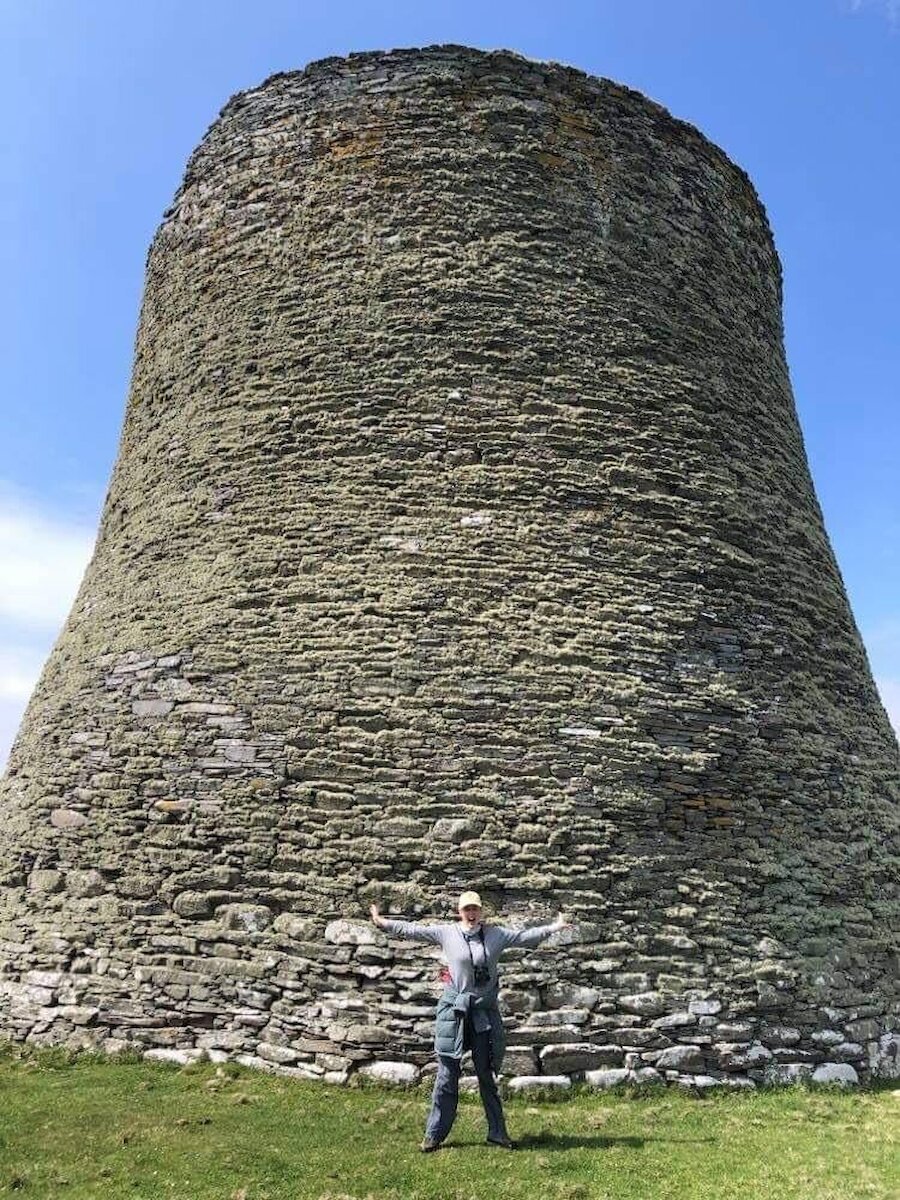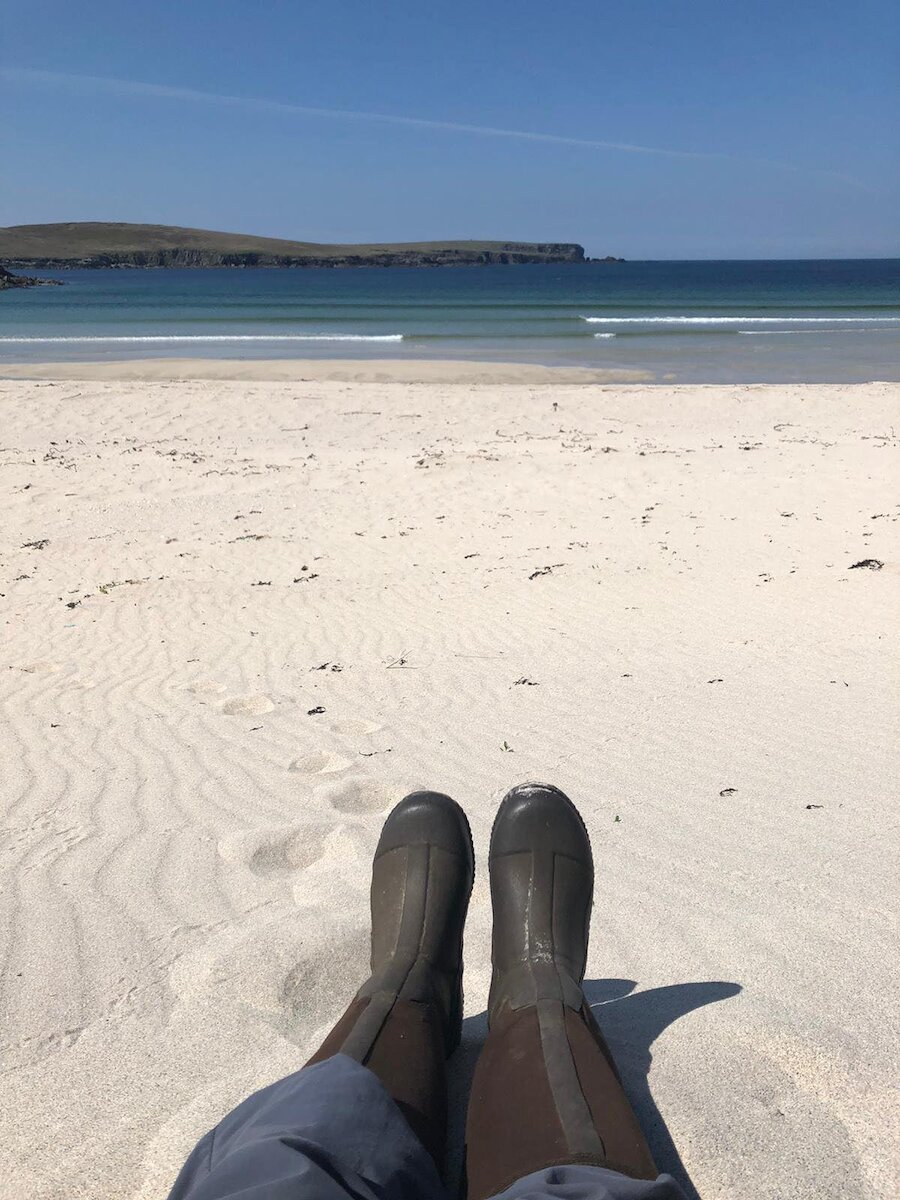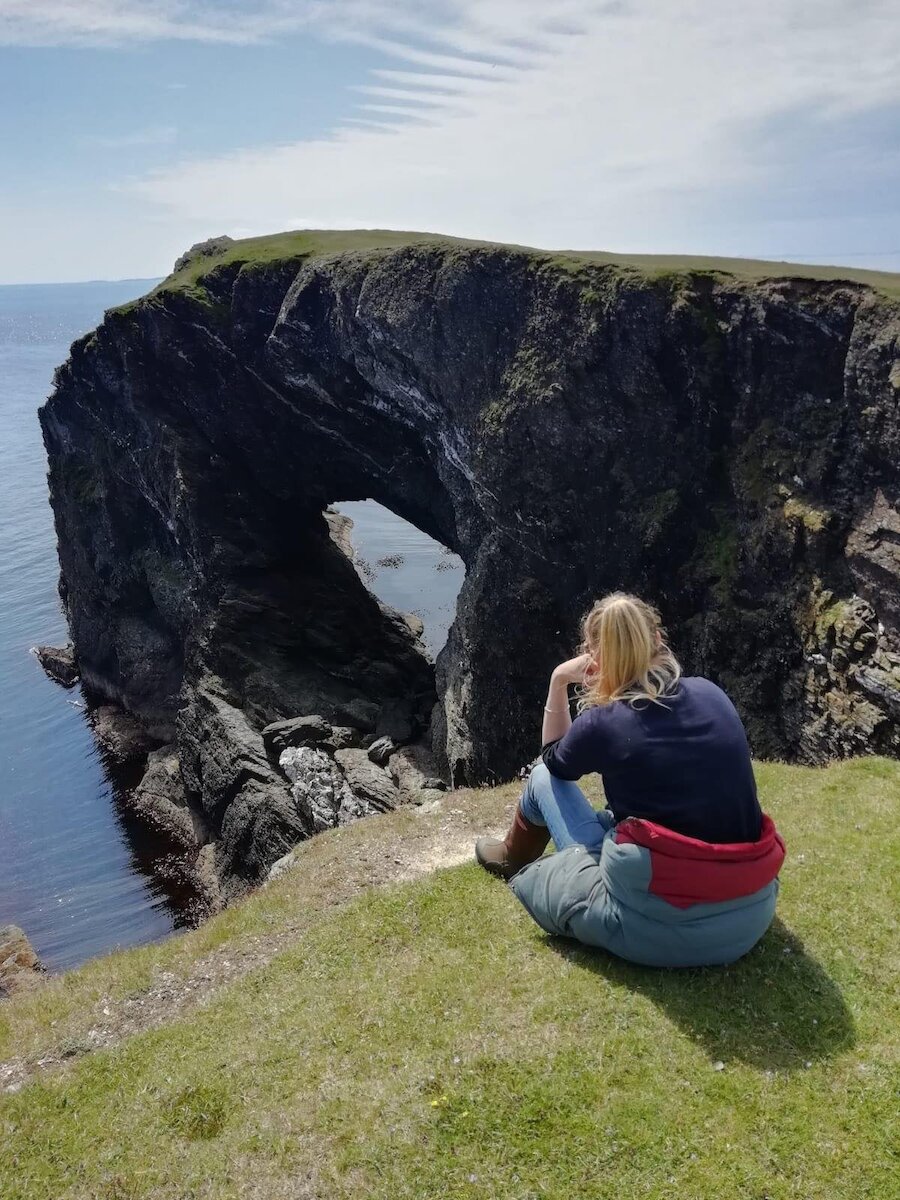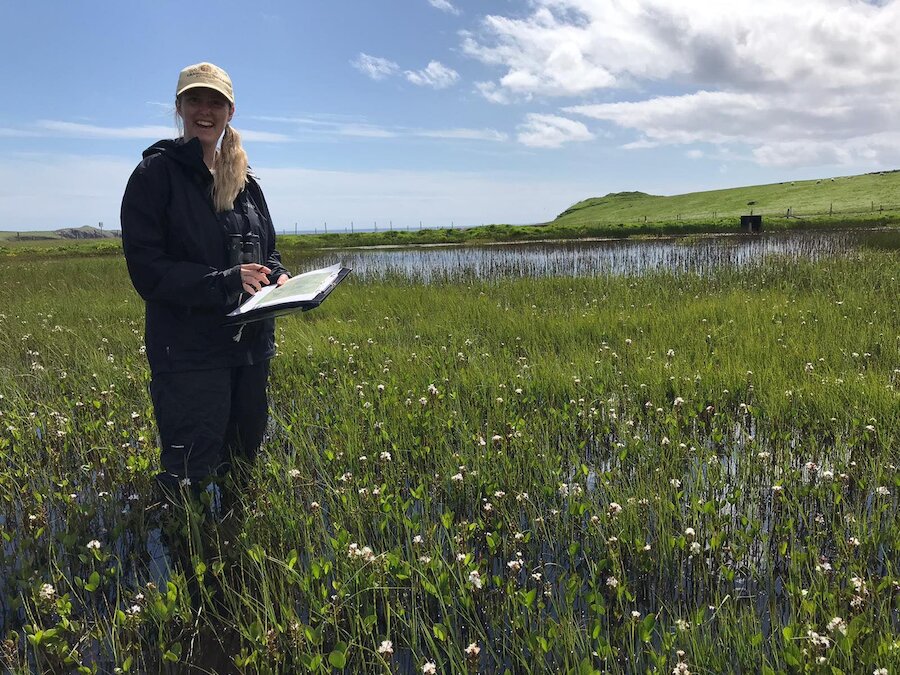For me, growing up in Lancashire, Shetland was this mythical far-off land that I was fascinated by, due to the chunky little ponies and the abundance of wildlife. I dreamed of going someday.
I’d had a lovely but short trip here in 2019, so when the opportunity arose to take a month-long sabbatical here, I grabbed it with both hands.
It has been one of the most incredible experiences of my life. From seeing unusual birds I would normally expect to see in the Mediterranean (golden oriole, red-rumped swallow, woodchat shrike to name a few), to the Arctic terns flying over Tesco car park in Lerwick, to the otter fishing in the sea by the Sumburgh Airport runway, to orcas rushing by the coast of Fetlar, everywhere you turn here, there is wildlife.
My non-working time has brought those epic experiences but my work time has been even more magical.



